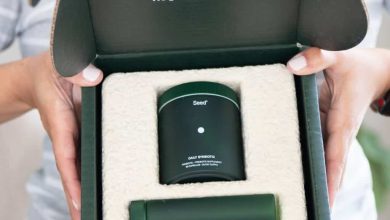Working Principle of Hot air oven manufacturers

A Hot air oven manufacturers is standard sterilization equipment in the laboratory that operates upon dry heat. In hot air oven manufacturers India, sterilization is the tactic of removing or destroying all microorganisms such as viruses, bacteria, and their spores from an object or surface without affecting its quality and quantity. It is a physical technique of sterilization attributable to dry heat.
Factors influencing sterilization by heat are the nature of heat, i.e., dry or damp, temperature and time, variety of microorganisms, nature of microorganisms, the number of organisms, and presence of organic material.
What is a hot air oven?
Most industries use hot air ovens to sterilize instruments and materials due to its simple standard operating procedure and low price and also provides a quick drying process.
Principle of hot air oven
Hot air oven manufacturers India uses the principle of dry and hot air convection (that is, circulation of heated air), conduction, and radiation. The techniques of hot air convection are of two types:
- Gravity convection process: in this, the hot air expands and attains less density than cooled air. Therefore, the hot air rises and displaces the cooler air (, the cooler air descends). It produces inconsistent temperature among the chamber, thus paves a path for slow turnover.
Mechanical convection: Use of fitted blower or fan that actively forces heated air to pass throughout all areas of the chamber of the hot air oven. This dry heat destroys endotoxins (or pyrogens) that are hard to eliminate by different suggestions. This property makes it applicable for sterilizing glass bottles that stuff aseptically.
Structure of Hot air oven and Functions
It consists of the parts as below:
- An insulated chamber enveloped by an external case containing electrical heaters
- A fan
- Shelves
- Thermostat
- Door protection controls
- Metallic cabinet with heating filament and fan fixed at the walls.
- Temperature management, double-walled :(inner being a poor conductor and outer being metallic and airy space in between the layers) insulation keeps the heat in and conserves energy. Electrically heated, and provide a blower to create a particularly quick and uniform.
Heating Mechanism
Killing results of dry heat on microorganisms is attributable to:
- i) harmful oxidation of essential cell constituents
- ii) macromolecule denaturation and
iii) toxic results of elevated levels of electrolytes.
Uses of Hot air oven
Sterilize substances that can bear up against heat and do not get burned, e.g., glass-wares, powders, forceps, scissors, scalpels, glass syringes, pharmaceutical products like liquid paraffin, fats, grease, and dusting powder, etc.
Handling procedure of Hot air oven
- Hot air oven manufacturers India wrap the object and enclose them in a case of cardboard, aluminum, or paper. Mouths of flasks, tubes, and every end of pipettes ought to block with natural fiber.
- Objects to be sterilized like Petri plates and pipettes might even arrange within metal canisters then placed. Place the object at adequate distances, thus allowing free circulation of air in between them and creating a specific uninterrupted flow.
- Shut the door and activate the hot air oven. When the thermometer shows that the hot air oven has reached the sterilizing temperature, heating lasts for a specified time (e.g., 160°C for an hour). Allow the temperature to fall up to 40°C (approximately 2 hours) before removing sterilized materials; that stops breakage of tableware.
Advantages of Hot air oven
- Need no water, and there is no voluminous pressure build-up within the oven, making it safer to work.
- Occupies less space than autoclave but can still be input-worthy.
- Oven attains higher temperatures as compared to different suggestions of heating.
- This treatment kills the poisonous substance; not all treatments can do this.
- Heat air oven is the only effective technique of sterilization of heat-stable articles for oils and powders.
- The oven protects sharps or instruments with a number one edge (fewer problems with dulling of cutting edges).
- It does not leave any chemical residue.
- It is non-toxic and does not injure the atmosphere.
Disadvantages of Hot air oven
- Some organisms like prisons won’t be killed or inactivated.
- Heating cannot purify the protective guards and heat resistive materials.
- Glasses might become smoky due to high sterilization temperatures: The temperature holding interval is 160°C for one hour, 170°C for 30 minutes, and 180°C for 20 minutes.
- Dry heat penetrates materials slowly and inconsistently and is thus a protracted technique due to the slow rate of heat penetration and microbial killing.
- An air oven asks for an endless supply of electricity.
Sterilization management for hot air oven
Biological controls
- In hot air oven manufacturers India, millions of spores of Bacilli niger and non toxigenic strains of moneron teta ni are placed within envelopes and then in the hot air oven. When sterilizing, organisms incubate for sterility check beneath strictly in anaerobic conditions for 3 to 5 days at 37°C.
- Growth in the medium indicates the failure of purification.
Chemical control: Browne’s tube No. 3 shows an inexperienced color once sterilized at 160°C for an hour (color changes from red to green).
Physical management: This uses a thermocouple and temperature chart recorder.
Precautions to be taken while autoclaving
- Sterilize dry substances.
- It shouldn’t be overburdened.
- Inflammable and volatile Substances like Rubber, fabrics should not be placed inside the oven.
- The oven needs to cool down for about 2 hours to 40°C before the door opens.
Conclusion
Due to its simplified standard operating process and cost-efficient use heat treatment and quick-drying processes in different sectors. As far as the hot air oven manufacturers India is concerned, the sterilization process is not restricted to dry heating or dry sterilization, including Many other heating methods.





